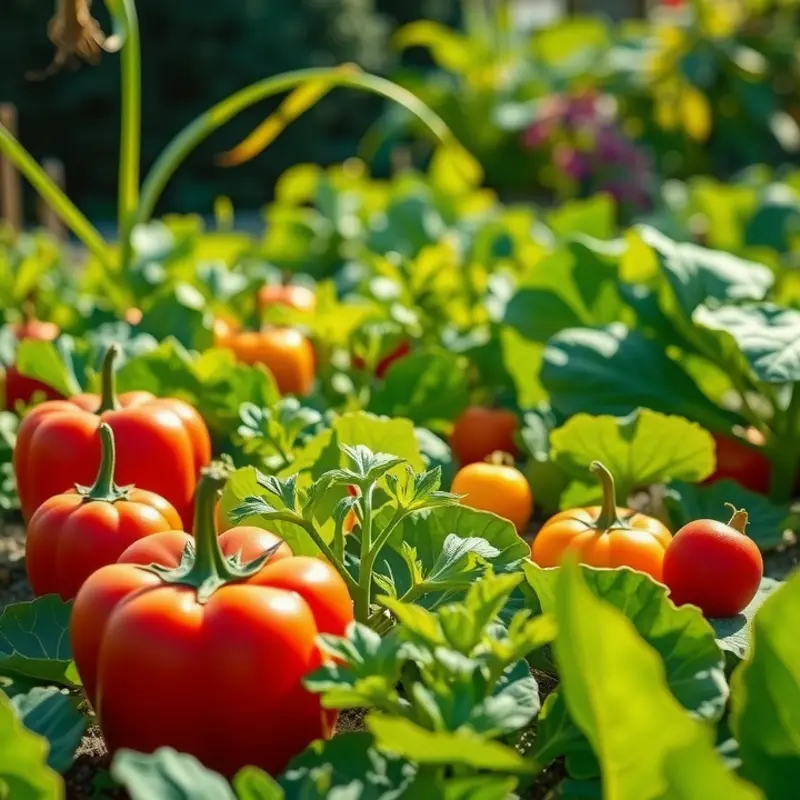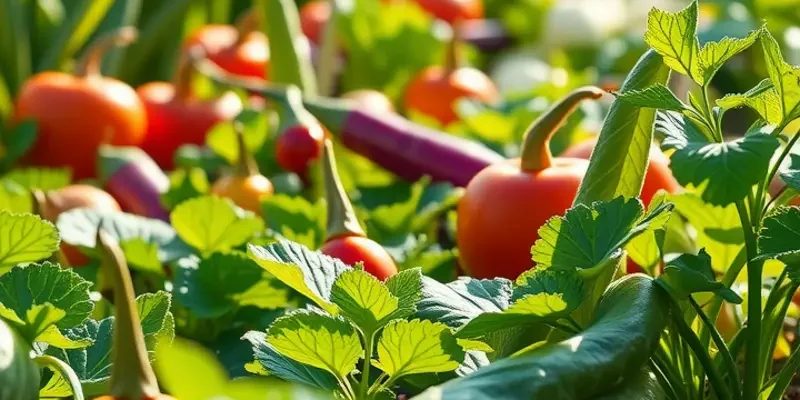Cooking without starch can elevate the freshness and nutritional value of your meals while still satisfying your cravings. Whether you’re looking to reduce carbs, manage dietary restrictions, or simply explore new culinary horizons, this guide offers practical ingredient swaps and strategies that keep your dishes vibrant and delicious. Say goodbye to heavy starches and discover how to cook with the abundance of flavors packed in vegetables, proteins, and spices.
Embracing the Rainbow: Vegetables as Your Main Ingredient

Exploring the world of vegetables opens up a vibrant palette of flavors and textures that can transform everyday meals. Vegetables are not just side dishes; they can take center stage and replace traditional starch-based ingredients. By embracing a variety of colorful vegetables, you turn every meal into an opportunity for both culinary creativity and health.
Unleashing Natural Flavors
Vegetables offer a spectrum of natural flavors, from the earthy notes of mushrooms to the sweet essence of bell peppers. These unique tastes can be brought out with careful preparation. Roasting is a powerful technique that enhances the sweetness and depth of several vegetables, like carrots and beets. Simply toss them with a drizzle of olive oil and a sprinkle of your favorite herbs, and let the oven work its magic.
Sautéing is another method that can highlight the flavors of your vegetable medley. Using a quality non-stick pan, cook your vegetables with a hint of garlic and onions until they are just tender. This method retains the essential nutrients and ensures every bite is bursting with flavor.
Creative Culinary Techniques
Incorporate spiralizing to replace pasta with vegetable noodles. Zucchini, butternut squash, and sweet potatoes spiralize beautifully, offering a lower-carb alternative to traditional noodles. These veggie spirals can be sautéed lightly or even eaten raw in salads for added texture.
Grilled vegetables such as eggplants or portobello mushrooms can serve as hearty substitutes for burger buns. They hold up well to grilling, offering a smoky flavor that pairs perfectly with your favorite burger toppings.
Seasonal Freshness and Diversity
Seasonal vegetables provide an array of options and ensure you’re getting the freshest produce. For instance, spring brings tender asparagus and vibrant peas, while autumn offers hearty squashes and root vegetables. This seasonal variety keeps your diet diverse and your palate excited.
Experimenting with vegetables not only diversifies the diet but enhances nutritional intake. A colorful plate is often a nutrient-dense plate, rich in vitamins and minerals like folate, potassium, and Vitamin C. By replacing starches with vegetables, you’re not just cutting calories but also boosting your health.
For further inspiration, consider practical ways to incorporate veggies into everyday meals, like ingredient batching, which can help streamline meal prep and ensure you always have fresh vegetables on hand. For tips on ingredient batching, check the practical ingredient batching guide for more streamlined cooking habits.
Incorporating a rainbow of vegetables into your meals isn’t about compromise—it’s about enhancing each dish with flavor, nutrition, and creativity. Let vegetables be the canvas on which you paint your flavorful, starch-free culinary masterpiece.
Protein-Packed Flavor: Alternatives to Starch

When starch takes a backseat, proteins emerge as the stars of satisfying, hearty meals. Their versatility allows them to fill the void of traditional starches, providing texture and flavor without compromise. From legumes, which are rich in both protein and fiber, to lean meats and seafood, the possibilities are endless. Pairing these proteins with a diverse array of vegetables can create meals that delight the palate and nourish the body.
Legumes such as lentils, chickpeas, and black beans are excellent choices for those seeking to cut starch without sacrificing fullness. These nutrient-dense options can be cooked into stews or blended into dips, providing a creamy texture that belies their starch-free nature. Their earthy taste complements robust spices, allowing dishes to remain vibrant and flavorful.
Quinoa, though technically a seed, is often used as a substitute for grains. High in protein and boasting a complete amino acid profile, it’s an excellent base for salads. Combining quinoa with a variety of colorful vegetables and a simple dressing results in a meal that’s as appealing to the eyes as it is satisfying to the appetite. Adding grilled chicken or roasted nuts can enhance the texture and increase the protein content of the dish.
For those who prefer animal-based proteins, lean meats such as chicken, turkey, and fish offer high protein with minimal fats. Techniques like marinating and grilling infuse these proteins with deep, rich flavors. Marinating involves soaking cuts of meat in a blend of spices, herbs, and a bit of acid such as citrus juice or vinegar. This process not only tenderizes the meat but also imparts a complex flavor profile.
Grilling is another technique that enhances the natural flavors of meat. The high heat of the grill creates a beautiful sear, locking in juices and adding a smoky savor. When paired with grilled vegetables like bell peppers, zucchini, or asparagus, the meal becomes a celebration of textures and tastes.
Bringing seafood into the mix introduces a whole new palette of flavors. Options such as shrimp, salmon, or cod can be quickly prepared through techniques such as broiling or pan-searing. Each method preserves the delicate flavor of the seafood while adding a crispy exterior that delights the senses. For tips on preparing seafood quickly and efficiently, you can find insights in this guide on speedy seafood preparation.
Wraps offer another creative avenue for starch-free meals. Using large leafy greens like lettuce or collard greens instead of traditional wraps introduces freshness to the dish while reducing carbs. Fill these with protein-rich fillings such as grilled chicken, beans, or tofu mixed with a variety of crunchy vegetables and a tangy sauce. This approach is not only healthier but also adds a delightful crunch with every bite.
By exploring the world of proteins, you open the door to limitless culinary creativity. Whether you are grilling, marinating, or blending, proteins can be adapted to suit all tastes. With the right techniques and pairings, enjoying meals without starch becomes a joyous exploration of flavors and a celebration of health.
Final words
Cooking without starch opens a world of culinary creativity and health benefits. By focusing on vegetables and protein alternatives, you can create meals that not only nourish the body but tantalize the taste buds. Let vibrant flavors guide your cooking as you explore adaptable recipes that suit various dietary needs. The techniques you’ve learned here empower you to think outside the box and redefine your approach to everyday cooking. Embrace this starch-free journey for a healthier and more fulfilling kitchen experience.







